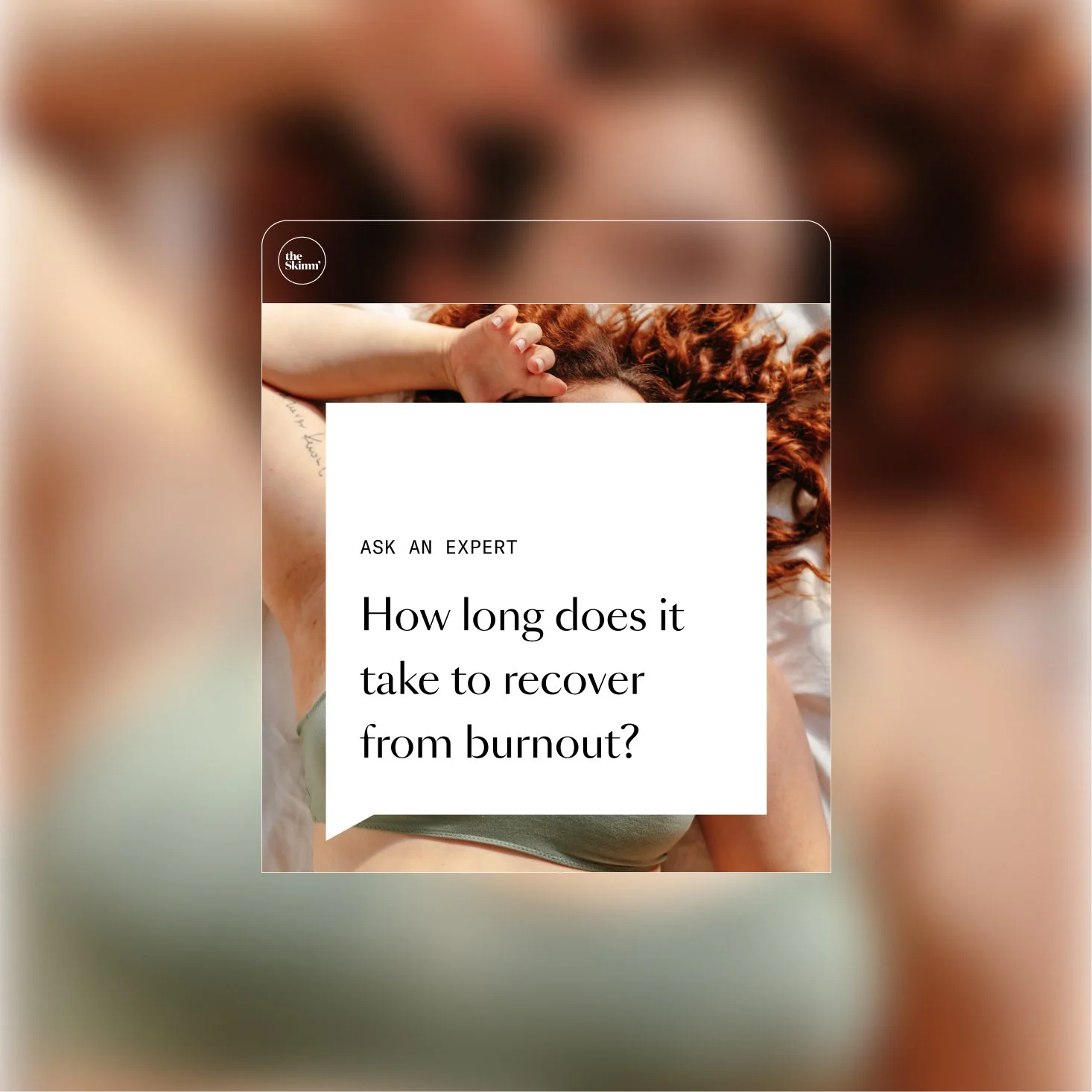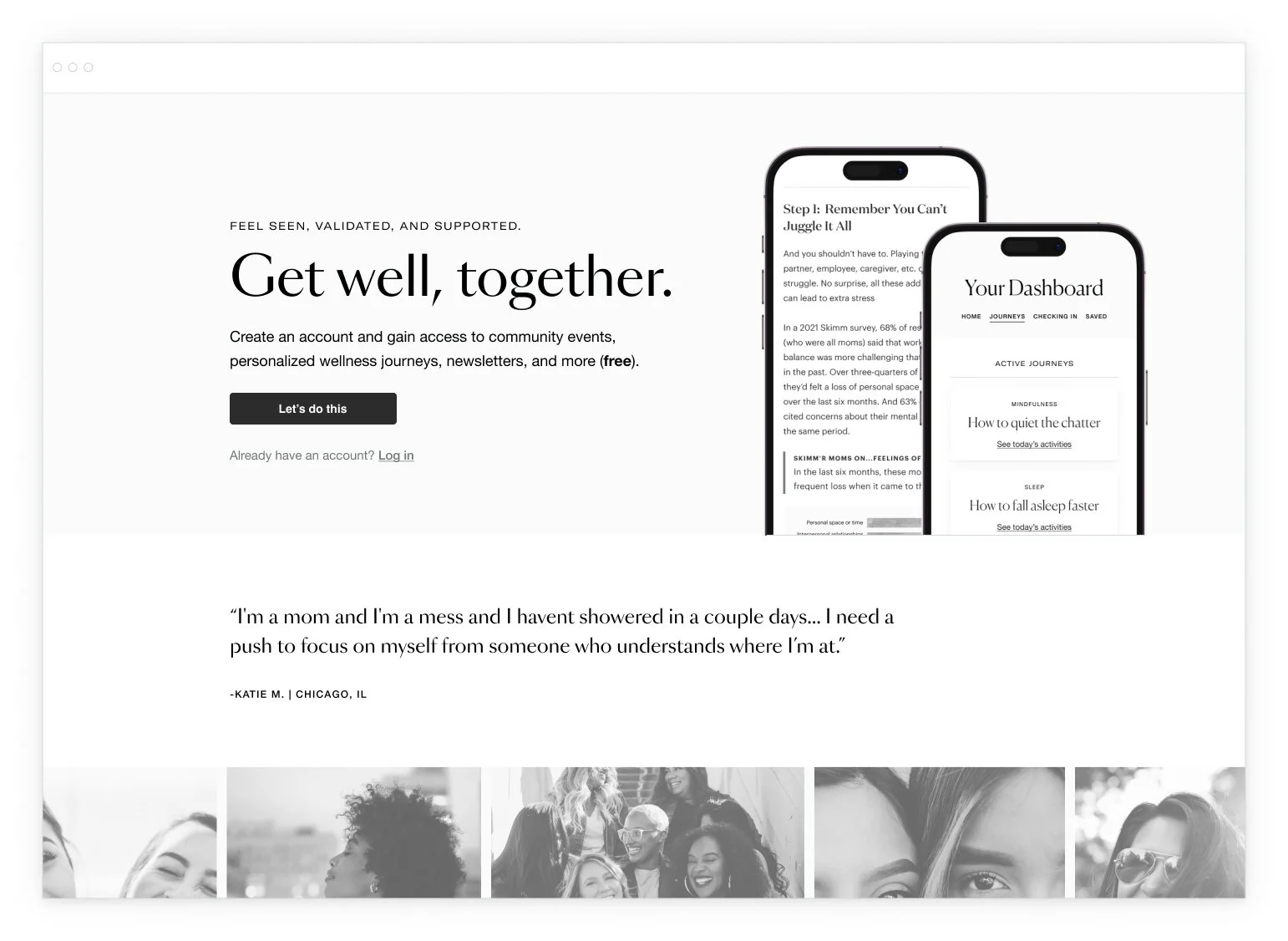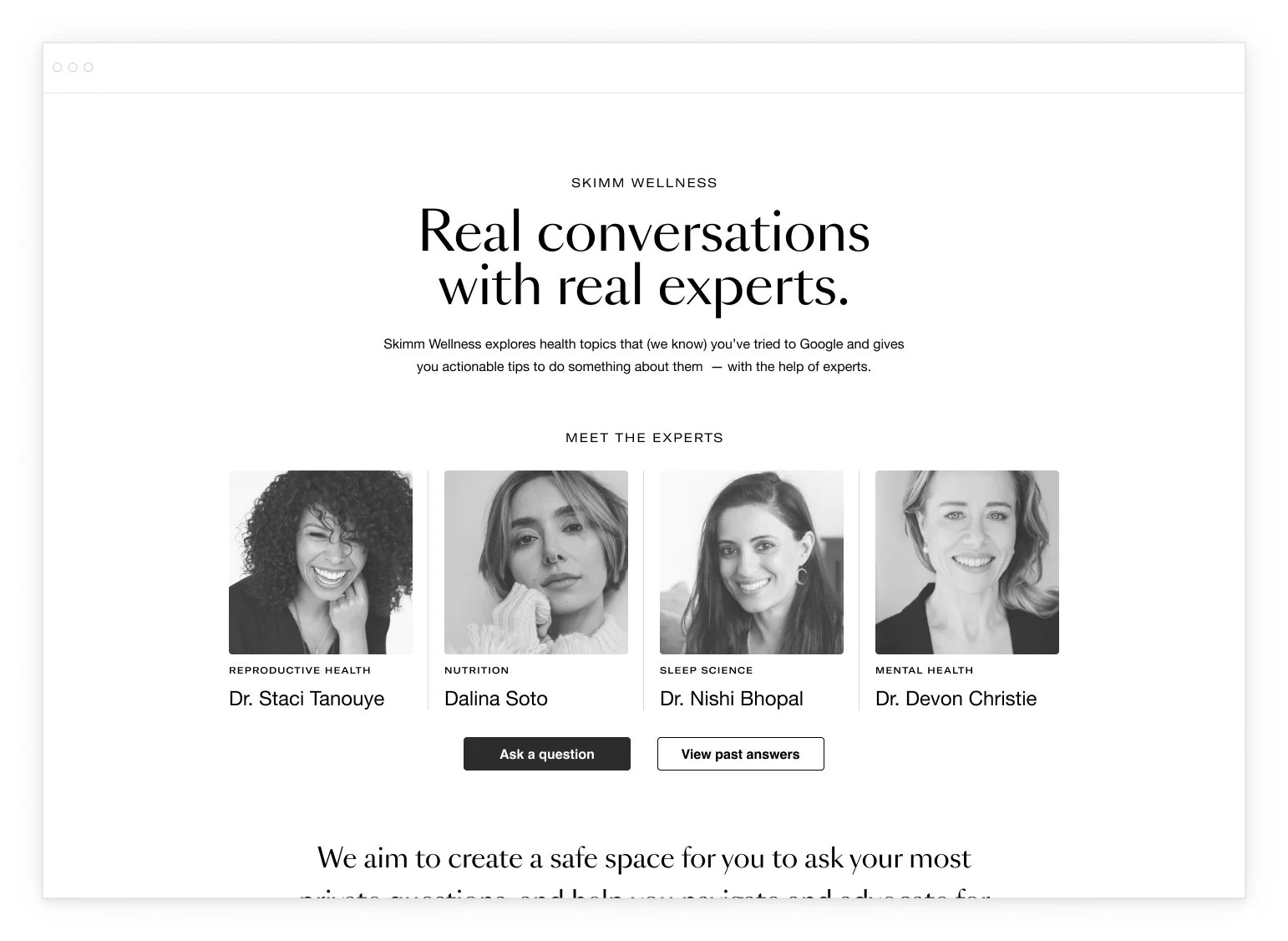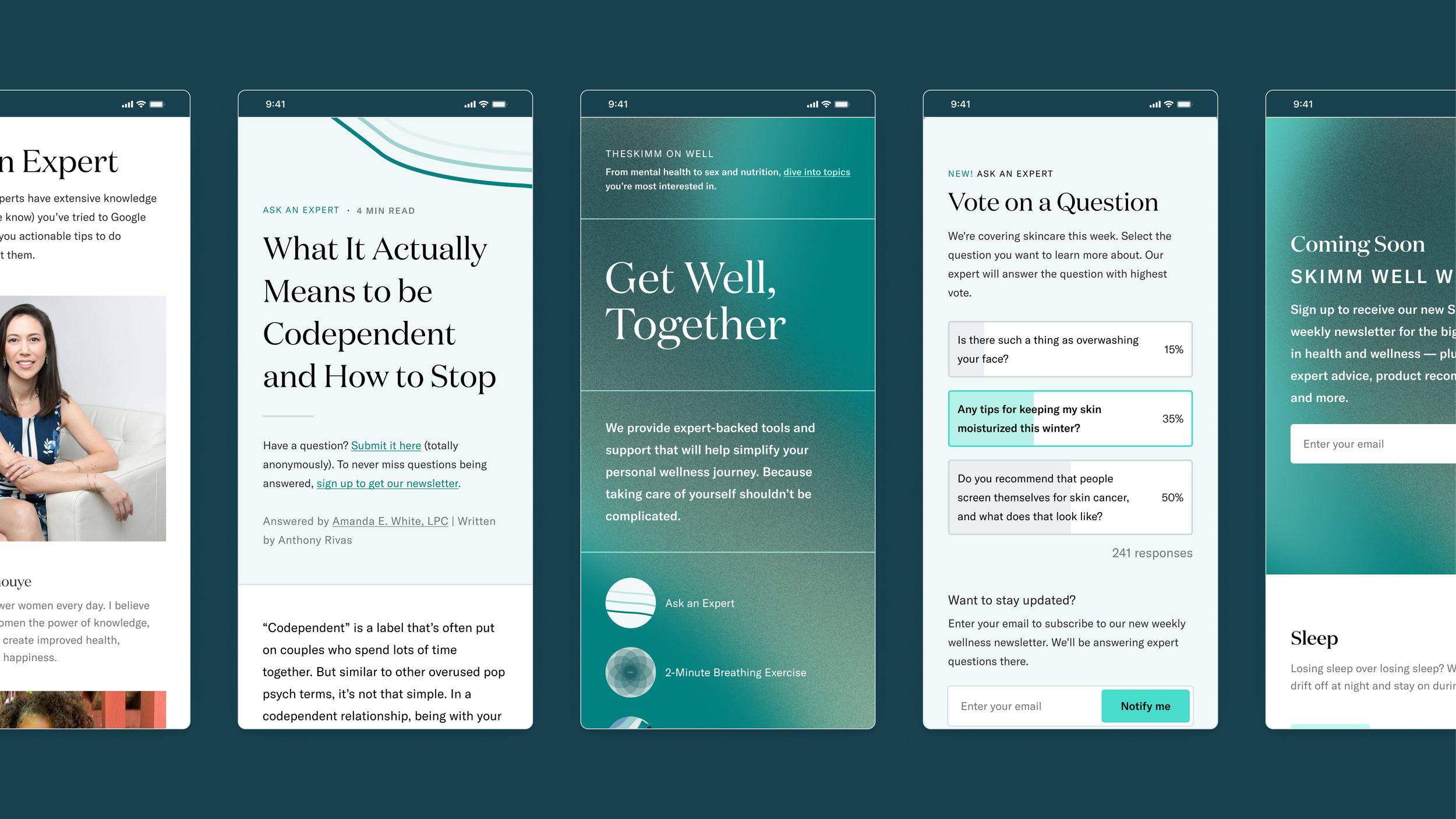Designing for Market Fit
Turning audience insights into a wellness experience that felt actionable, strengthened theSkimm’s brand promise, and built user trust in a new category.
The Goal
In Q3–Q4 2022, the company set a key OKR: find product/market fit in the wellness space. My team was tasked with defining what this product could be, validating our assumptions through research, and shaping an MVP to test in-market.
The Challenge
Design a product that women find useful, delightful, and habit-forming. Something that seamlessly fits into her life and wellness goals. To do that, we needed to:
Define the target user
Understand her needs and motivations
Create concepts with distinct value props
Build and test an MVP
Iterate based on feedback
Note: Confidential information has been omitted in accordance with my NDA.
Discovery & Ideation
We kicked off by mapping assumptions about our audience and identifying themes through team ideation sessions. These helped shape early hypotheses and guide our research strategy.
Emerging themes:
Trust & Expertise: She wants wellness advice from credible, expert-backed sources—and a safe space to ask questions, ideally anonymously.
Community & Accountability: She’s short on time but values motivation from others. Goal-setting, peer stories, and shared challenges help her stay engaged.
User Research: Round 1
I led exploratory interviews with 20 women (ages 26–44, across the U.S. and Paris) to validate our assumptions and uncover needs.
Key insights:
Wellness is holistic: Most women defined it beyond physical health—mental and emotional wellness were top priorities.
She values credibility: Reddit, Instagram, and friends were common sources, but she prefers info from experts or firsthand experiences.
She wants anonymity: Many hesitate to ask doctors personal questions. An anonymous, judgment-free space would increase engagement.
Biggest barriers: Time, motivation, and cost.
Preferred formats: Short-form content, podcasts, and infographics. Long videos were a turn-off unless captioned.
These findings helped us create detailed personas and sharpen our concept directions.
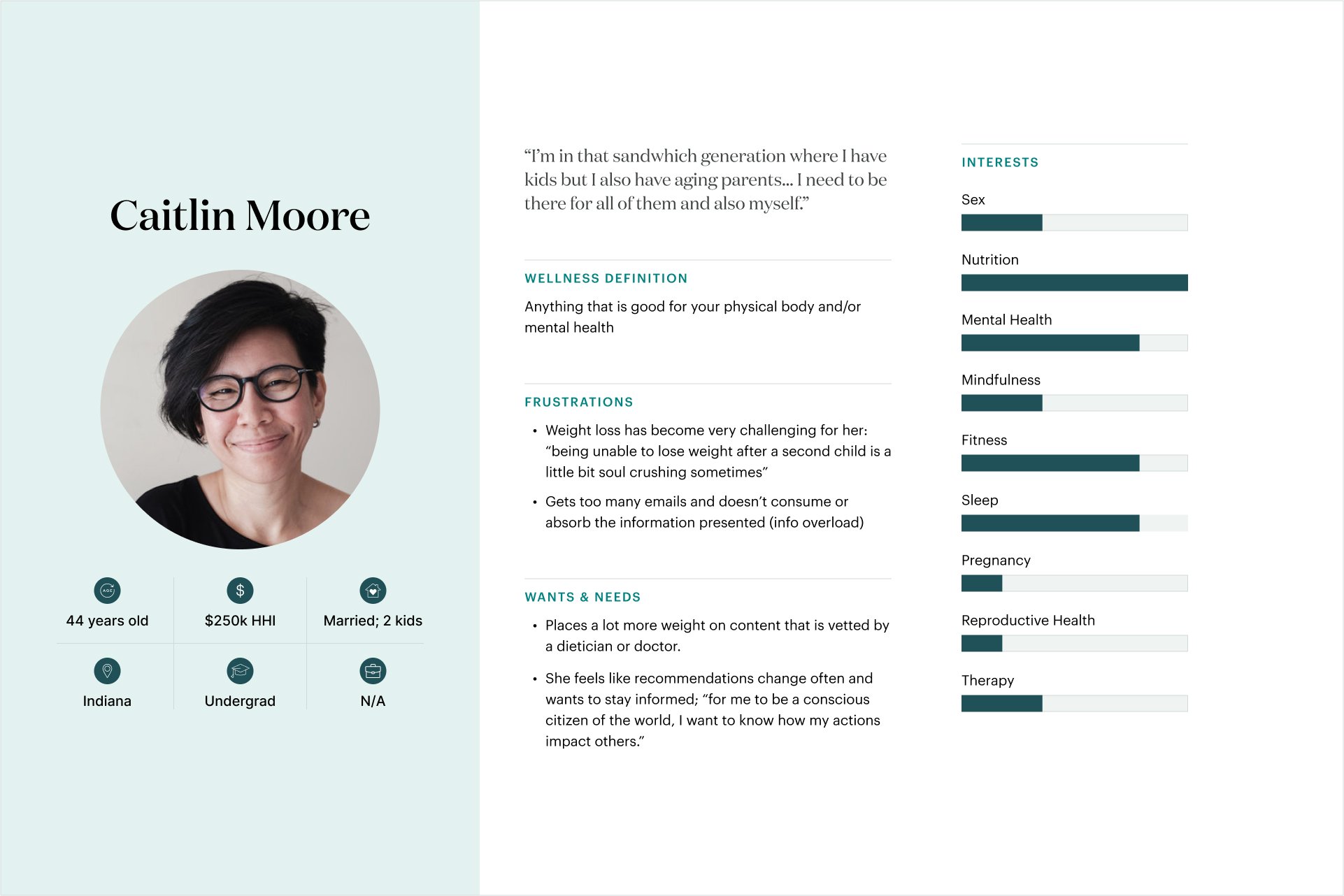

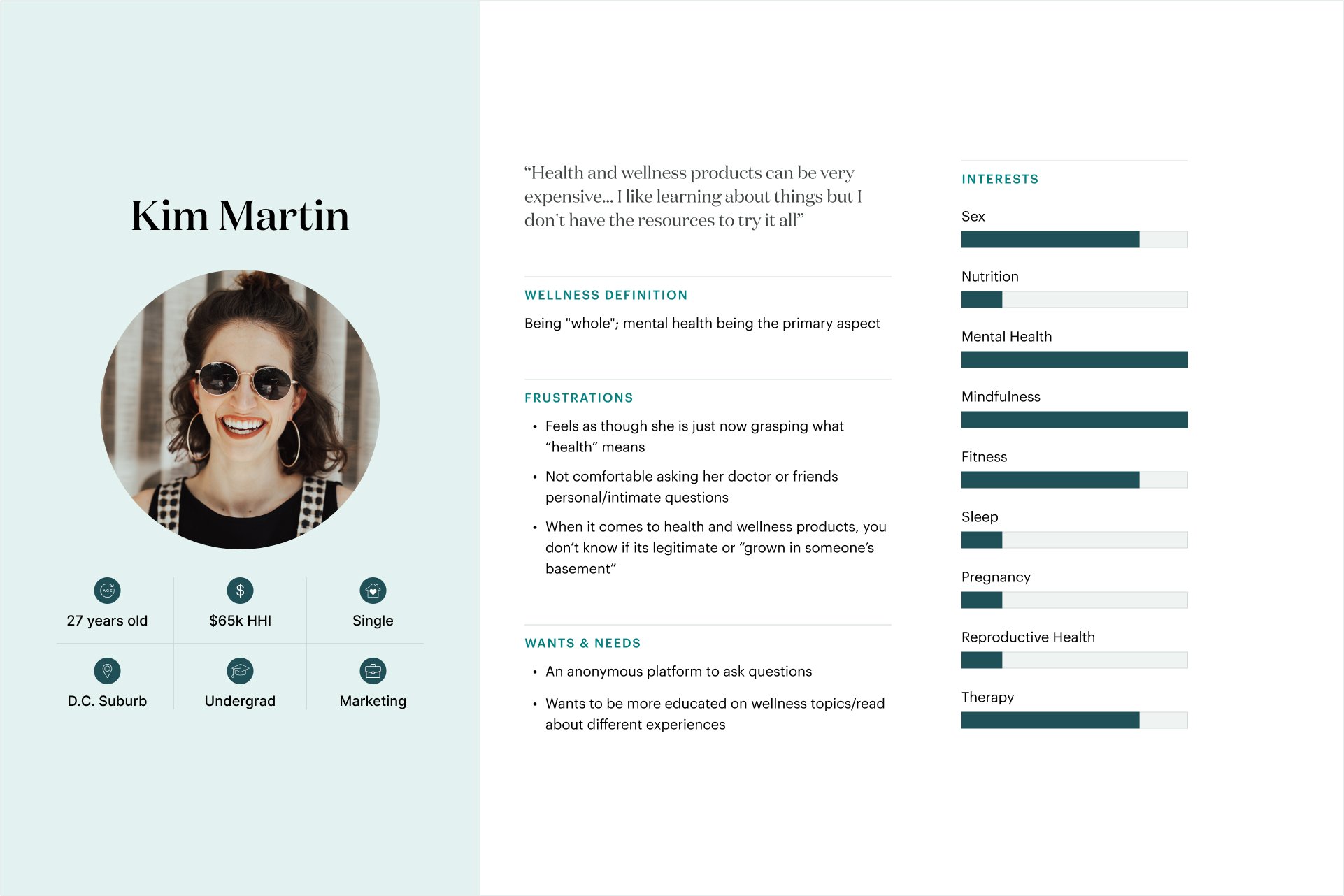

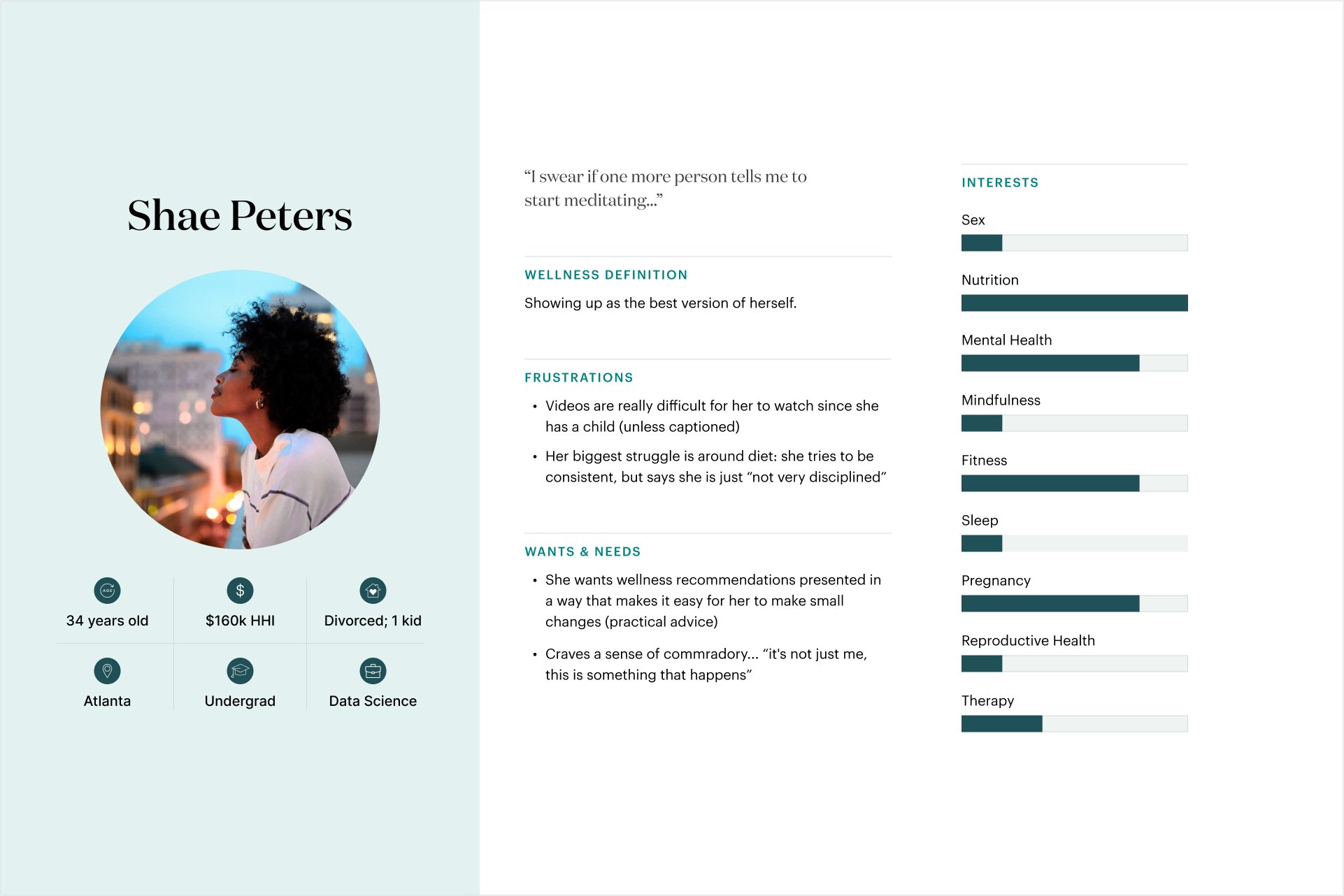
Concept Development
Using our personas and a PRFAQ from Product Management, we defined three potential directions:
Experts & Anonymous Q&A
A space to submit questions, read expert-backed answers, and advocate for mental/physical wellness. Problem: Wellness questions feel too personal to ask in traditional settings.Health Advocacy Hub
A platform to help her navigate the complex, inequitable healthcare system. Problem: She knows she needs to advocate for herself, but doesn't know how.Dashboard & Community Journeys
Custom wellness journeys + community-driven goals and support. Problem: She needs structure, tangible progress, and accountability.
We prioritized two concepts for testing:
Dashboard & Journeys
Experts & Q&A
User Research: Round 2
We tested both concepts with 18 women (ages 24–46) via moderated sessions on usertesting.com.
What we learned:
Strong interest in both directions (many wanted a hybrid.)
Key features users loved:
Anonymous Q&A with experts
Personalized dashboards
Community wellness events or challenges
Preferred flexibility in format: live Q&As, podcasts, articles, and courses.
Least exciting element? Newsletters.
The MVP
We launched an early version focused on high-interest features:
Ask an Expert: Anonymous question submission with expert responses
Expert-backed content
Two-way communication (Q&A threads, not static content)
We tested and iterated while simultaneously exploring the future-state vision.
Impact & Reflection
This was one of my favorite projects at theSkimm. The open-ended brief allowed us to think big, and speaking with users about their wellness journeys was incredibly meaningful.
While the full future-state product was paused due to company reprioritization, the MVP’s Ask an Expert feature became the most engaged-with module on both the wellness homepage and in newsletters. It later evolved into a cross-functional content franchise that still lives on in theSkimm’s ecosystem today.
What I’d Do Differently 💡
Run a Design Sprint: This project was a perfect candidate for a sprint. After establishing our personas, I would have facilitated a cross-functional design sprint to quickly align on direction and prototype early concepts.
Start Smaller with Research: While the 20 exploratory interviews were valuable, they were also time-intensive. Starting with just 5 would have surfaced strong signals early, giving us a chance to iterate faster before scaling

